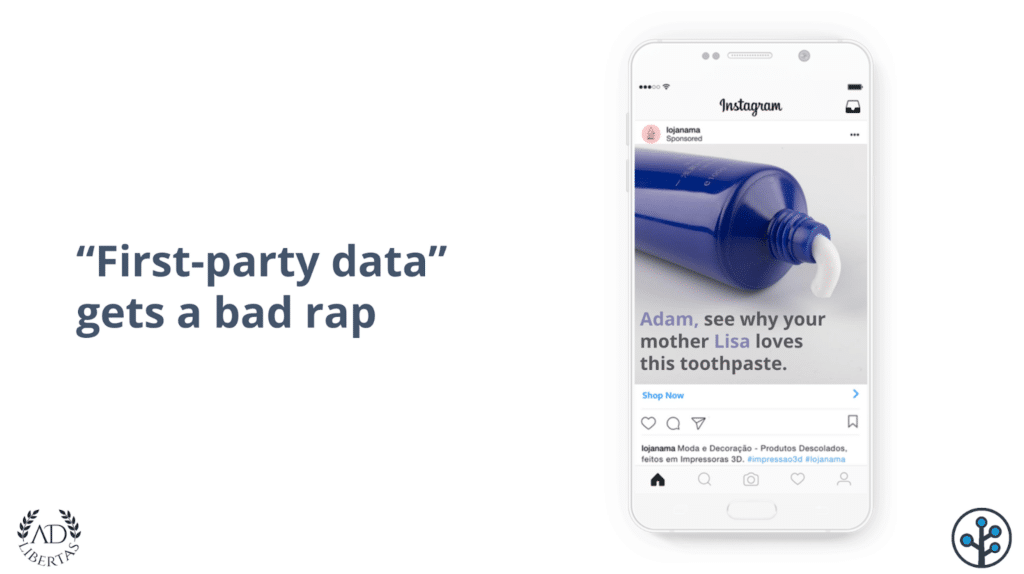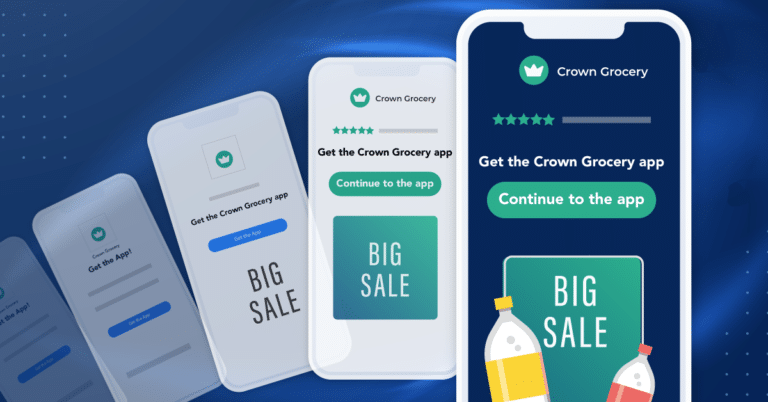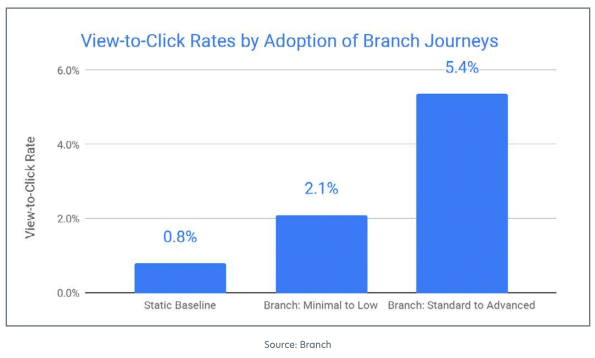Privacy regulations have dramatically expanded in recent years as consumers worry more about sharing their personal information and how that information is used. In response, marketers are looking for ways to navigate privacy changes while still addressing customer needs.
While this may seem like a power struggle between marketers and consumers for data, it’s in fact a shared desire for more relevant and useful experiences for consumers. Despite consumers’ worry about privacy, they still want to be exposed to relevant ads. According to Google and BCG’s recent report, 74% of people say they only want to see ads that are useful and relevant to them.
Part of the challenge here is that Apple’s Private Relay feature threatens the concept of deferred deep linking for iOS 15 users because it masks the user’s IP address. This leads to broken links and more drop-offs due to a dampened user experience.
But winning marketers have managed to shift their processes without disrupting the user experience. In particular, they focus on three key things: respecting consent, generating first-party data, and leveraging web-to-app flows.:
1. Use solutions that respect people’s consent choices
To optimize mobile web for conversions, you need to implement a solution that improves user experience while at the same time respecting privacy.
For instance, to overcome the challenges of Apple’s Private Relay, marketers can implement a privacy-preserving solution like NativeLink that provides users with a seamless experience while ensuring accurate attribution matching. This way, you can preserve the standard deferred deep linking flow and identify the true source of conversion, all without persistent identifiers or invasive user tracking.

2. Generate insightful first-party data
Consumers are now more aware and informed of their data privacy than ever before, and for good reason. Brands need consumer data to offer a personalized experience, retarget to lower abandonment rates, or reduce touchpoints in the buying journey. But some brands often leap far from the true context of the consumer data they collect. Instead, they target consumers with what seems like outright creepy ads that raise concerns about their data privacy.

In addition, many brands confine a massive group of users into stringent “customer personas,” which doesn’t guarantee successful marketing campaigns. Collecting demographic information like gender, postal code, and age barely affects purchasing decisions in today’s intent-driven market.
A more nuanced approach to first-party data involves factoring in how you can use customer data to personalize the user journey. People are interested in purchasing or downloading a mobile app when their appreciation for personalization outweighs their concerns about privacy. In other words, people are generally happy — or at least would consider — sharing their personal information in exchange for something valuable.
So instead of relying on third-party data, focus on first-party data collected directly from customers. Collecting first-party data helps you understand the unique relationship a customer has with your product, which also gives you insights into what motivates them to take action.
3. Leverage web-to-app flows
Our data suggests that converting existing mobile visitors into loyal app users is 82% less expensive than running app install ads.
To do so, marketers increasingly rely on web-to-app flows like Journeys to route users from a web page to a corresponding app. This tactic helps them integrate personalization while A/B testing different smart banners to discover what truly motivates web users to convert to app users — all while ensuring a smooth user experience.
Personalized banners are 5X more effective than generic ones.
Here are a few tips and best practices for creating effective smart banners that help you improve conversions:
- Display an interstitial to a high-frequency website visitor who is already familiar with your brand. At the same time, display smaller, less assertive floating buttons to first-time visitors.
- Display half- or full-page banners with a compelling call to action (CTA) to users who have already taken an action on your website — signed up for a newsletter, clicked an offer, or created a profile. This will help foster stronger relationships with prospects who have a higher brand affinity and increase the likelihood of conversions (i.e., downloading your app or making a purchase).
- Create banners that consider the contextual relevance of your consumer’s user journey. People coming to your website from social media channels have a different mindset than those coming from organic search. Respect these different customer journeys and use personalized CTAs in your banners.
- Highlight a unique benefit of your mobile app in your banner’s copy. Creating banners with value-driven content and graphics that align with your prospects’ previous brand interactions help deliver a consistent brand experience.
- Create targeted onsite banners that show only to users who come from paid campaigns.
- Check out solutions for more advanced use cases.
Meet the challenge of a privacy-first world
As consumers’ concern for digital privacy grows — and as leading tech giants like Google, Apple, and Facebook limit the collection of app user data — marketers find themselves more challenged than ever to meet consumer expectations. While taking steps toward a privacy-safe world may seem daunting at first, it’s important to continually adapt new strategies that hone in on your mobile web’s traffic — the highest ROI channel for conversion.
To learn more about how you can drive higher app conversions, contact our sales team or your Branch support team.

























